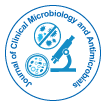

Perspective - (2022)Volume 6, Issue 1
Adenovirus infection is a contagious viral disease caused by adenoviruses that usually leads to an infection of the respiratory tract. Typical symptoms range from the common cold, such as stuffy nose, nausea and cough, to difficulty breathing like pneumonia. Other general symptoms include fever, fatigue, muscle aches, headaches, abdominal pain, and swollen neck nodes. Onset is usually two to fourteen days after exposure to the virus. A mild eye infection may occur alone, in combination with a sore throat and fever, or as more severe adenoviral keratoconjunctivitis with a painful red eye, light intolerance, and discharge. Very young children can only hurt the ear. Adenovirus infection can present as gastroenteritis with vomiting, diarrhea, and abdominal pain, with or without respiratory symptoms. However, some people have no symptoms.
Adenovirus infections in humans are generally caused by adenovirus types B, C, E, and F. Spread occurs mainly when an infected person is in close contact with another person. This can occur either through the faecal-oral route, airborne transmission or small droplets containing the virus. Less commonly, the virus can spread through contaminated surfaces. Other respiratory complications include acute bronchitis, bronchiolitis and acute respiratory distress syndrome. In people with weak immune systems, it can cause myocarditis, meningoencephalitis or hepatitis.
Adenovirus infections affect all age groups. They occur sporadically throughout the year, and outbreaks can occur especially in winter and spring, when they can spread more rapidly in closed populations such as hospitals, nurseries, longterm care facilities, schools and swimming pools. Severe disease is rare in people who are otherwise healthy. Adenovirus infection accounts for up to 10% of respiratory infections in children. Most cases are mild, and by age 10 most children have had at least one adenovirus infection. 75% of conjunctivitis cases are caused by adenovirus infection. In 2016, the Global Burden of Disease Study estimated that about 75 million episodes of diarrhea in children under the age of five worldwide could be attributed to adenovirus infection.
Symptoms
Symptoms vary, from mild symptoms to severe disease. It depends on the type of adenovirus, where it enters the body, and the person's age and health. Recognized patterns of clinical symptoms include the respiratory, ocular, gastrointestinal, genitourinary, and central nervous systems. There is also a widespread type that occurs in immune-compromised people. Typical symptoms are a mild cold or flu-like; fever, stuffy nose, coryza, cough and pinkish red eyes. Infants may also have symptoms of an ear infection. Onset is usually two to fourteen days after exposure to the virus. Fatigue, chills, muscle aches or headaches may occur. However, some people have no symptoms. Generally, a day or two after the development of a sore throat with large tonsils, glands can be felt in the neck. The disease is more likely in people with weakened immune systems, especially children who have had blood cell transplants. Sometimes a skin rash appears.
Prevention
Adenovirus infection can be prevented by washing your hands, not touching your eyes, mouth and nose before washing your hands and avoiding being around sick people. Strict attention to proper infection control practices is effective in stopping the transmission of adenovirus-related diseases in hospitals, such as epidemic keratoconjunctivitis. Maintaining adequate chlorination levels is essential to prevent outbreaks of poolassociated adenoviral conjunctivitis. A live adenovirus vaccine to protect against adenovirus types 4 and 7 has been used in some military personnel. After the introduction of a live oral vaccine against types 4 and 7, the incidence of adenovirus disease among military recruits declined. Supplies of the vaccine ran out in 1999, and the incidence of the disease increased until 2011, when the vaccine was reintroduced.
Citation: Olay T (2022) Symptoms of Adenovirus Infection and its Prevention. J Clin Microbiol Antimicrob. 06: 128
Received: 15-Mar-2022, Manuscript No. JCMA-22-20195; Editor assigned: 17-Mar-2022, Pre QC No. JCMA-22-20195 (PQ); Reviewed: 01-Apr-2022, QC No. JCMA-22-20195; Revised: 07-Apr-2022, Manuscript No. JCMA-22-20195 (R); Published: 15-Apr-2022 , DOI: 10.35248/JCMA. 22.6.128
Copyright: © 2022 Olay T. This is an open-access article distributed under the terms of the Creative Commons Attribution License, which permits unrestricted use, distribution, and reproduction in any medium, provided the original author and source are credited.